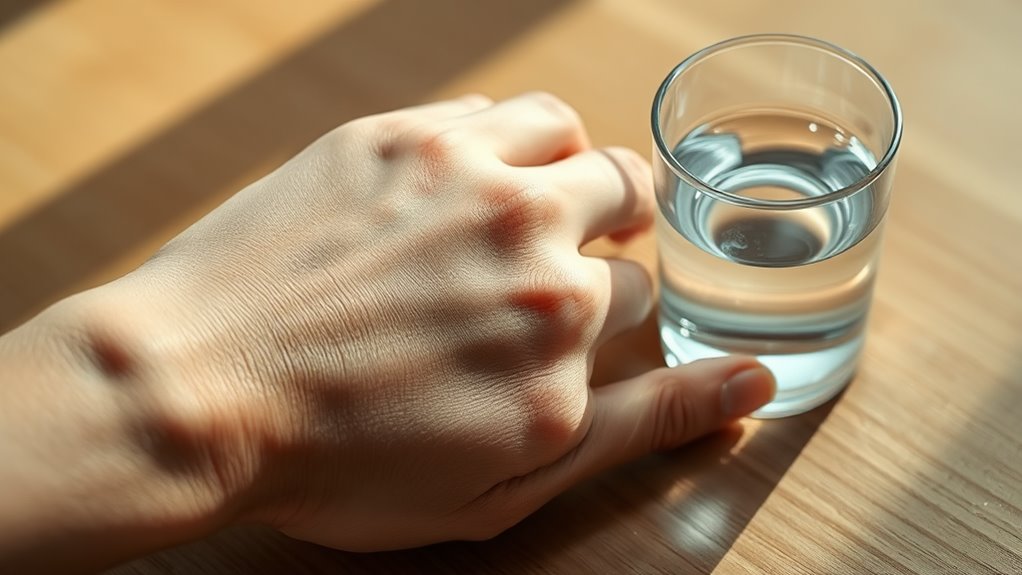How to Know If Your Skin Is Actually Dry or Just Dehydrated
Your skin might feel like the Sahara Desert, but is it really dry or just dehydrated? Understanding the unique characteristics of each condition can significantly impact your skincare routine. You’re likely experiencing tightness or flakiness, but knowing the right signs can make all the difference. Let’s explore how to differentiate between the two, ensuring your skin gets the care it truly needs.
Understanding Dry Skin
Dry skin, often marked by roughness and flakiness, can feel uncomfortable and tight. It’s essential to distinguish dry skin from dehydrated skin; dry skin indicates a lack of oil, while dehydrated skin results from insufficient water. Understanding this difference helps you choose the right moisturizing products. Focus on hydrating ingredients for dehydrated skin and emollients for adequately addressing dryness. Additionally, incorporating expert-approved strategies can significantly help to soothe sensitive skin and improve overall comfort.
Recognizing Dehydrated Skin
Identifying dehydrated skin can be a bit trickier than recognizing dry skin, as it’s often less visible and doesn’t always involve flaky patches.
Instead, you might notice a tight sensation, dullness, or a lack of elasticity. Your skin may feel rough, and fine lines can become more pronounced. Pay attention to these signs to better understand your skin’s hydration needs. Additionally, seasonal changes can significantly influence your skin’s hydration levels, altering how you should care for it.
Key Differences Between Dry and Dehydrated Skin
While both dry and dehydrated skin can lead to discomfort, understanding their key differences is essential for effective treatment.
Dry skin lacks oil, resulting in a flaky appearance, while dehydrated skin lacks water, causing it to feel tight and dull. You’ll want to address the root causes specifically; products for dry skin boost oil levels, whereas those for dehydration enhance hydration. Additionally, certain foods can contribute to skin health issues, so opting for a well-balanced diet can promote a more radiant complexion.
Symptoms of Dry Skin
Recognizing the symptoms of dry skin can help you determine if your skin health needs attention.
Look for these common signs:
- Flaky or rough texture
- Tightness after cleansing
- Red or patchy areas
- Itchiness without rash
- Cracks or fissures in severe cases
If you notice these symptoms, it might be time to adjust your skincare routine for better hydration and nourishment. Additionally, understanding the role of innovative remedies can further aid in restoring moisture and enhancing overall skin health.
Symptoms of Dehydrated Skin
Wondering if your skin is dehydrated? Look for these telltale signs: a tight feeling, dullness, and the presence of fine lines.
You might notice rough texture and increased sensitivity as well. Unlike dry skin, dehydrated skin can appear oily but still lack moisture. This condition can sometimes be mistaken for other issues, such as dark spots and acne scars, which require different treatment approaches.
If you’re experiencing these symptoms, it’s essential to address your skin’s hydration levels promptly.
Effective Treatments for Dry and Dehydrated Skin
To effectively treat dry and dehydrated skin, it’s crucial to implement a targeted skincare routine that focuses on hydration and nourishment.
Consider these effective treatments:
- Use a rich moisturizer daily.
- Incorporate hyaluronic acid serums.
- Apply natural oils like jojoba or argan.
- Drink plenty of water.
- Avoid harsh cleansers and hot showers.
These steps will help restore your skin’s health and vitality.





